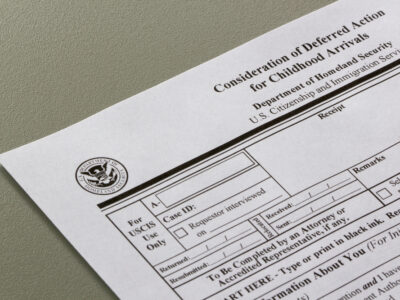Injured workers are not the only ones who can be affected by significant workers’ compensation issues in California. Such issues can also arise for families of workers who lost their lives on the job. This is because death benefits are among the benefits that can be pursued through the state’s workers’ compensation system. How issues related to death benefits are handled can have major impacts on families following a loved one being taken from them by a workplace accident. Skilled California workers’ comp attorneys can advise families of killed workers on the process of pursuing such benefits.
Unfortunately, it appears that California workplaces saw an increase in deaths last year. That is what recent statistics point to.
Reportedly, in 2015, there were 388 worker deaths in California. This works out to around 2.2 deaths for every 100,000 workers in the state. Both in raw numbers and in rate, this was an increase over 2014. That year saw 344 worker deaths and a worker fatality rate of 2.0 fatalities per 100,000 workers. Notably, however, the 2015 numbers were still lower than those from 2013.
California also saw more multi-fatality workplace accidents in 2015 (13 accidents) than it did in 2014 (6 accidents). Some of the common causes of California workplace fatalities in 2015 were transportation incidents, slips/trips/falls, and workplace violence.
What Workers’ Comp Death Benefits Cover in California
When a worker dies as a result of a job-related injury or illness, California’s workers’ compensation law provides financial support to the surviving dependents. These benefits are designed to stabilize families who have lost not only a loved one but also a source of income.
Under California Labor Code §§4700–4709, benefits include:
- Weekly support payments: The amount depends on the number of total and partial dependents. For example, a single dependent may be entitled to up to $250,000, two dependents up to $290,000, and three or more dependents up to $320,000.
- Burial expenses: Families may receive reimbursement for funeral and burial costs up to $10,000.
- Duration of benefits: Spouses generally receive payments until they remarry, and children typically receive support until the age of 18, or longer if they are disabled.
These benefits are processed through the California Division of Workers’ Compensation (DWC), and disputes may be resolved before the Workers’ Compensation Appeals Board (WCAB).
Employer Obligations and Safety Responsibilities
California law requires all employers to carry workers’ compensation insurance and to report workplace deaths promptly. Employers must also notify Cal/OSHA within eight hours of a fatal accident. Beyond insurance obligations, employers are legally required to implement an Injury and Illness Prevention Program (IIPP), which includes training employees, correcting unsafe conditions, and regularly assessing hazards to prevent injuries and illnesses. Failure to comply can expose employers to penalties and civil liability under Cal/OSHA.
By law, workplace safety is not optional. In industries such as construction, transportation, agriculture, and healthcare, where risks are high, employers must enforce safety protocols, provide protective equipment, and ensure compliance with state and federal regulations. These preventive measures are critical in reducing fatalities and avoiding the tragedies that lead to death benefit claims.
California Fatality Trends in Context
While the 2015 statistics offer insight, more recent numbers reveal that workplace deaths remain a pressing issue. According to the U.S. Bureau of Labor Statistics (BLS), California recorded 462 workplace fatalities in 2021, an increase compared to prior years. The leading causes included transportation accidents, falls, and workplace violence, reflecting national trends.
When compared to the United States overall, California’s fatality rate per 100,000 workers has generally remained slightly lower than the national average. However, due to the state’s large workforce and diverse industries, the absolute number of deaths is consistently among the highest in the nation. This underscores the importance of robust workers’ compensation protections for families in California.
Filing a Death Benefit Claim
The process of pursuing workers’ comp death benefits involves several critical steps:
- Notification of death: Employers are required to notify Cal/OSHA and their insurance carrier promptly.
- Submission of claim: Dependents must file a claim form with the employer or insurance carrier within one year of the worker’s death, though exceptions may apply.
- Review and determination: The insurance company investigates the claim, verifies dependency, and confirms the work-related cause of death, often requiring medical reports and death certificates to substantiate the findings.
- Dispute resolution: If the claim is denied, the case can be appealed before the WCAB, where a judge reviews the evidence and issues a binding decision.
Because disputes over dependency or causation are common, legal representation is often the difference between approval and denial of a claim.
FAQs on Workers’ Comp Death Benefits in California
Who qualifies for workers’ comp death benefits?
Eligible dependents include spouses, minor children, disabled adult children, and, in some cases, parents or other relatives who relied on the worker for financial support.
How much are the benefits worth?
The maximum death benefit ranges from $250,000 to $320,000, depending on the number of dependents, plus up to $10,000 for burial expenses. Weekly payments are calculated based on the worker’s wages.
How long does it take to receive benefits?
Timelines vary, but families typically begin receiving payments within weeks if the claim is undisputed. Contested claims may take months and require hearings before the WCAB.
Are workers’ comp death benefits taxable?
No. Under federal and state law, workers’ comp benefits, including death benefits, are not considered taxable income.
Can non-married partners or stepchildren qualify?
Yes, if they can demonstrate financial dependency on the deceased worker. Courts and the WCAB review each case individually.
What if the claim is denied?
Families may appeal before the WCAB. Legal assistance is often necessary to present medical, financial, and dependency evidence in an effective manner.
Do immigration status issues affect benefits?
No. California law allows dependents to claim benefits regardless of immigration status.
Protecting Families Through Legal Guidance
The death of a loved one at work is a life-changing tragedy. Beyond the emotional toll, families face financial hardship, legal paperwork, and disputes with insurance companies. Navigating this process requires not only understanding the law but also ensuring that dependents receive every benefit to which they are entitled.
At Hussain & Gutierrez, our attorneys have extensive experience representing families in workers’ compensation death benefit claims. We understand how to gather the right evidence, handle disputes, and maximize recovery for surviving dependents. Whether your case involves a straightforward claim or a complex appeal, we are committed to protecting your rights.
If you have lost a family member in a workplace accident, contact Hussain & Gutierrez today for a consultation. Our team is ready to guide you through the claims process and ensure your family receives the full benefits you deserve.



